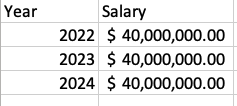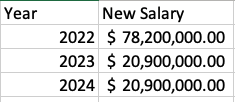This is part four and the final part of a multi-part series on different rules and settings you can add to your dynasty and contract leagues to give your league a new and exciting dimension. These articles are be broken out into different changes ranging from rosters to contracts and trades.
To view Part 1, click HERE
To view Part 2, click HERE
To view Part 3, click HERE
Note: This part deals specifically with contracts and salary cap leagues. If you’re in a regular dynasty league, the following rule changes don’t apply (which means you should join a contract league!).
Contract Manipulation
Retirement Buyouts
Retirement is a natural part of the NFL. Usually, in contract leagues, the player’s remaining years of the contract are forgiven and removed from the team’s roster when a player retires. This means no dead money cap hit. The downside to this is owners operate without the worry of retirement.
Let’s use Tom Brady as an example. In the last two years, during free agent auctions, many owners signed Brady to a long-term (3-4 years) extension to acquire his services. They did this to keep the AAV low, knowing that if he retires during the lifetime of the deal, the remaining cap will be forgiven. A way to keep contracts realistic and prohibit the retirement loophole is to implement a retirement buyout age limit. If a player is aged 29 or under when they retire, the remaining years’ cap hit is forgiven. If a player is aged 30 or more, all years’ cap hits must be accounted for, including dead cap hits. This will hinder owners from giving longer contracts to players in the hopes of debts being forgiven.
Salary Acceleration
The NFL accelerates or pushes to future years a player’s salary for cap purposes. The next three types of contract manipulations deal with salary reallocation. The first type is what I call Salary Acceleration. This is the act of taking a future year’s salary and applying it to the current year. Let’s use the 2022 NFL salary cap of $208,200,000 as an example. Your team is currently out of contention for the playoffs, and it’s the final two weeks of the regular season. You have Tyreek Hill on a three-year deal (2022, 2023, and 2024) for $120,000,000 ($40,000,000 a year). Your rosters’ total cap hit in 2022 is $180,000,000, and you want to use your remaining $38,200,000 ($208,200,000 – $180,000,000) of cap space to accelerate Hill’s contract for future years’ cap space. Please see below:

Because Hill has two years remaining on his deal, you split the remaining salary cap space ($38,200,000) over the two years for $19,100,000 each year. This is the amount you accelerate each season, thereby reducing his future cap hit numbers to the following:

His 2022 salary accounts for the original $40,000,000 plus $19,100,000 from 2023 and 2024 EACH. This will help the owner build a better roster and utilize more cap space in future seasons to compete.
Restructuring
Contract Restructuring is the norm in the NFL. Simply put, the player’s salary (with the exception of the league minimum salary) is converted to a signing bonus. This signing bonus is then capitalized over the remaining future years of the contract. It’s a good way to take the current year’s money and push it into later years in order to fit under the current cap constraints. With the knowledge that the salary cap is rising significantly in future years, restructuring occurs frequently.
Contract Balancing
Contract Balancing is balancing the total contract amount over the lifetime of the deal. Three of the most common types of contracts are: (1) balanced, (2) progressive, and (3) regressive.
Balanced is the most common in salary cap leagues, and it’s the same salary for every year, the contract split evenly across the years of the contract. RealitySportsOnline uses the progressive format. This format has each subsequent year of a contract more expensive than the previous year. This is similar to the NFL, where cap hits usually increase in value with each successive year. The final format is regressive. This is the least common but still interesting. The regressive format makes the first year of the contract have the highest cap hit and the last year the lowest cap hit. The way to make your league more interesting is to allow owners to use all three types of contract balances during the free agent auction to help create unique and interesting salary cap scenarios.
This is the tip of the iceberg for contract manipulation rules in contract leagues. There are many more exciting and unique ways that you can implement. My hope is that the outlined rules above help make your leagues more fun and interesting.
Make sure you subscribe to the #NerdHerd, where you get exclusive content, dynasty/rookie/devy rankings, buy/sell tool, and a bonus podcast too. Dynasty Nerds also recently launched the #DynastyGM tool, a complete game-changer in the fantasy industry. Click here for a free trial. We truly are your one-stop shop for all your fantasy football needs!


















